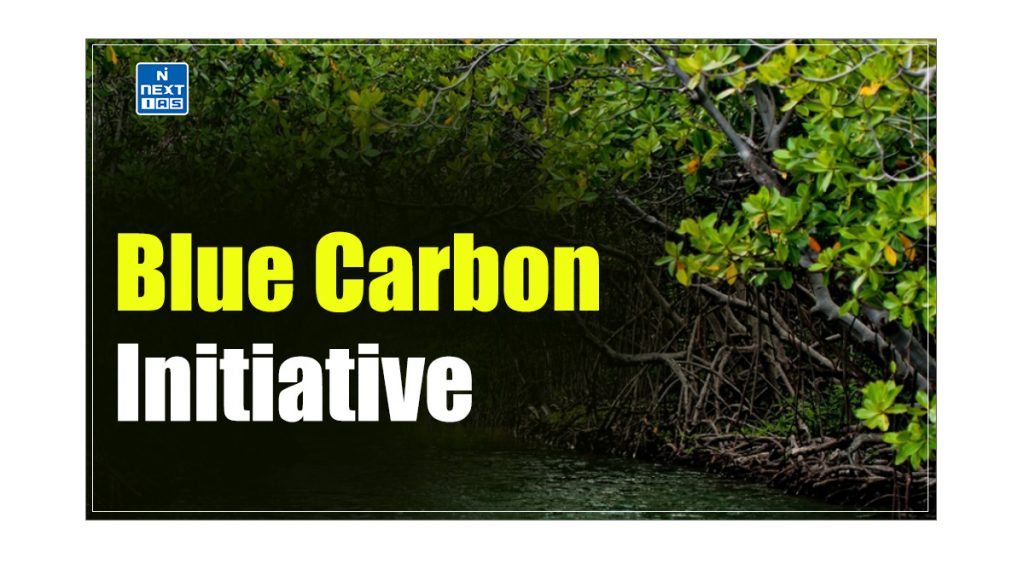
The Blue Carbon Initiative offers a promising approach to addressing climate change by harnessing the power of nature. As the impacts of climate change become more severe, the importance of blue carbon will only grow. This article aims to study in detail the Blue Carbon Initiative, its key elements, and other related concepts such as Blue Carbon and Blue Carbon Ecosystems.
About Blue Carbon Initiative
- The Blue Carbon Initiative aims to evolve a global partnership to advance the management of coastal and marine ecosystems in order to ensure that their carbon capture and storage functions are maintained.
- Blue Carbon Initiative helps in the development both of global, regional and national policies for ecosystem management and financial instruments to maintain and enhance sequestration in Blue Carbon ecosystems.
- Blue Carbon Initiative is under the umbrella of the United Nations Environment Programme.
Key Elements of Blue Carbon Initiative
- Developing standardised methodologies for carbon accounting;
- Economic valuation of ecosystem services in coastal blue carbon ecosystems;
- Using these methodologies in a range of small-scale interventions;
- Filling gaps in our knowledge of ecosystem services and of carbon sequestration;
- Exploring how the international community can adopt the methodologies to influence international climate frameworks and create incentives for protecting ecosystem services and carbon sequestration.
International Cooperation on Blue Carbon Initiative
- Many international organisations like the Conservation International (CI), the International Union for Conservation of Nature (IUCN), the Intergovernmental Oceanic Commission (IOC) of UNESCO, Blue Carbon Initiative of the United Nations Environment Programme (UNEP) are working to develop an understanding between different state Governments, nongovernmental organisations, Private corporations and international organisations to develop methodologies and standards for carbon accounting and economic valuation of ecosystem services in coastal blue carbon ecosystems.
- These international organisations are exploring how the international community can adopt the methodologies to influence international climate frameworks and create incentives for protecting ecosystem services and carbon sequestration.
- The international community is trying to support the ongoing research into the sequestration, storage and loss of carbon from blue carbon systems.
- These organisations collaborate with different state governments, nongovernmental organisations, and international organisations to formulate policies and regulations at regional and global levels for carbon sequestration.
What is Blue Carbon?
- Blue carbon is the carbon stored in marine and coastal ecosystems.
- Blue Carbon is about alleviating climate change through coastal ecosystem management.
- The blue carbon is captured and stored in the form of biomass and sediments.
- The coastal ecosystems have been found to store huge quantities of carbon in organic rich sediments more carbon than many terrestrial forests.
Major Blue Carbon Ecosystems
- Seagrass, Mangrove, Marsh and Algae act as Blue carbon ecosystems.
- These ecosystems are found in:
- Seagrass ecosystems range from polar to tropical regions,
- Mangroves are found in tropical and sub-tropical ecosystems
- Marshes are found in mostly temperate regions
- Algae are found in regions ranging from polar to tropical.
- These types of habitats are known as carbon sinks and contain large stores of carbon accumulated over hundreds to thousands of years.
Importance of Blue Carbon Ecosystem
- Coastal habitat is important for seafood and recreation and it also plays an important role in alleviating the impact of climate change.
- Marshes, Algae, mangroves and seagrass absorb large quantities of the greenhouse gas carbon dioxide from the atmosphere and sequester it, alleviating the effects of global warming.
Conclusion
The Blue Carbon Initiative represents a crucial global effort to address climate change by protecting and restoring coastal ecosystems that sequester carbon. By promoting science, policy integration, conservation, and community engagement, the Blue Carbon Initiative provides a roadmap for incorporating blue carbon into global climate strategies. Overcoming the challenges, investing in research and development and raising public awareness will be essential to ensure the initiative’s long-term success in combating climate change.
Frequently Asked Questions (FAQs)
What is Blue Carbon?
Blue carbon refers to the carbon captured and stored by coastal and marine ecosystems, particularly in mangroves, salt marshes, and seagrasses.
Why is Blue Carbon Important?
Blue carbon is crucial for mitigating climate change by sequestering carbon dioxide, protecting biodiversity, and supporting coastal resilience against climate impacts.






